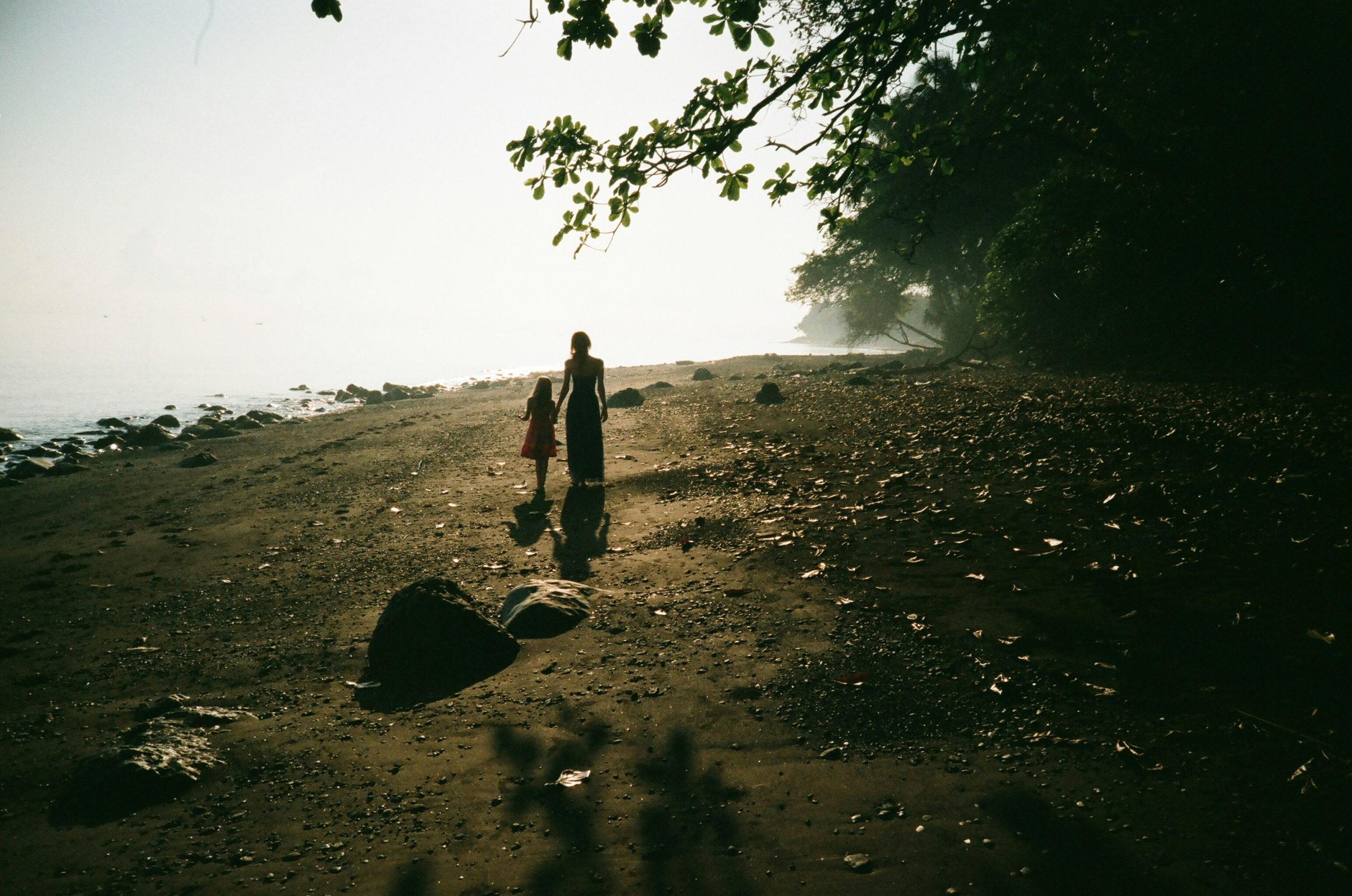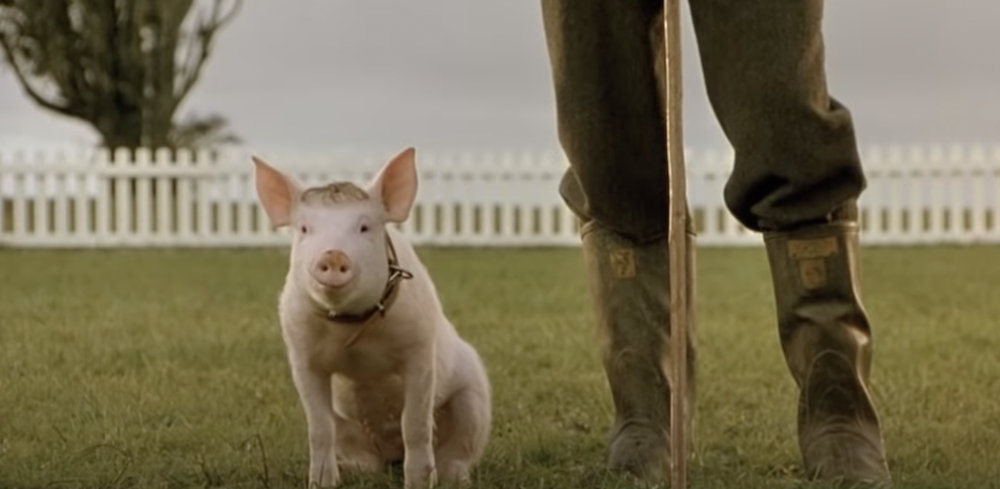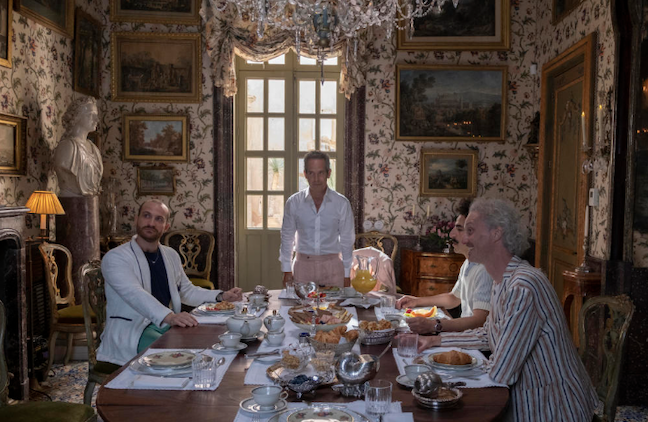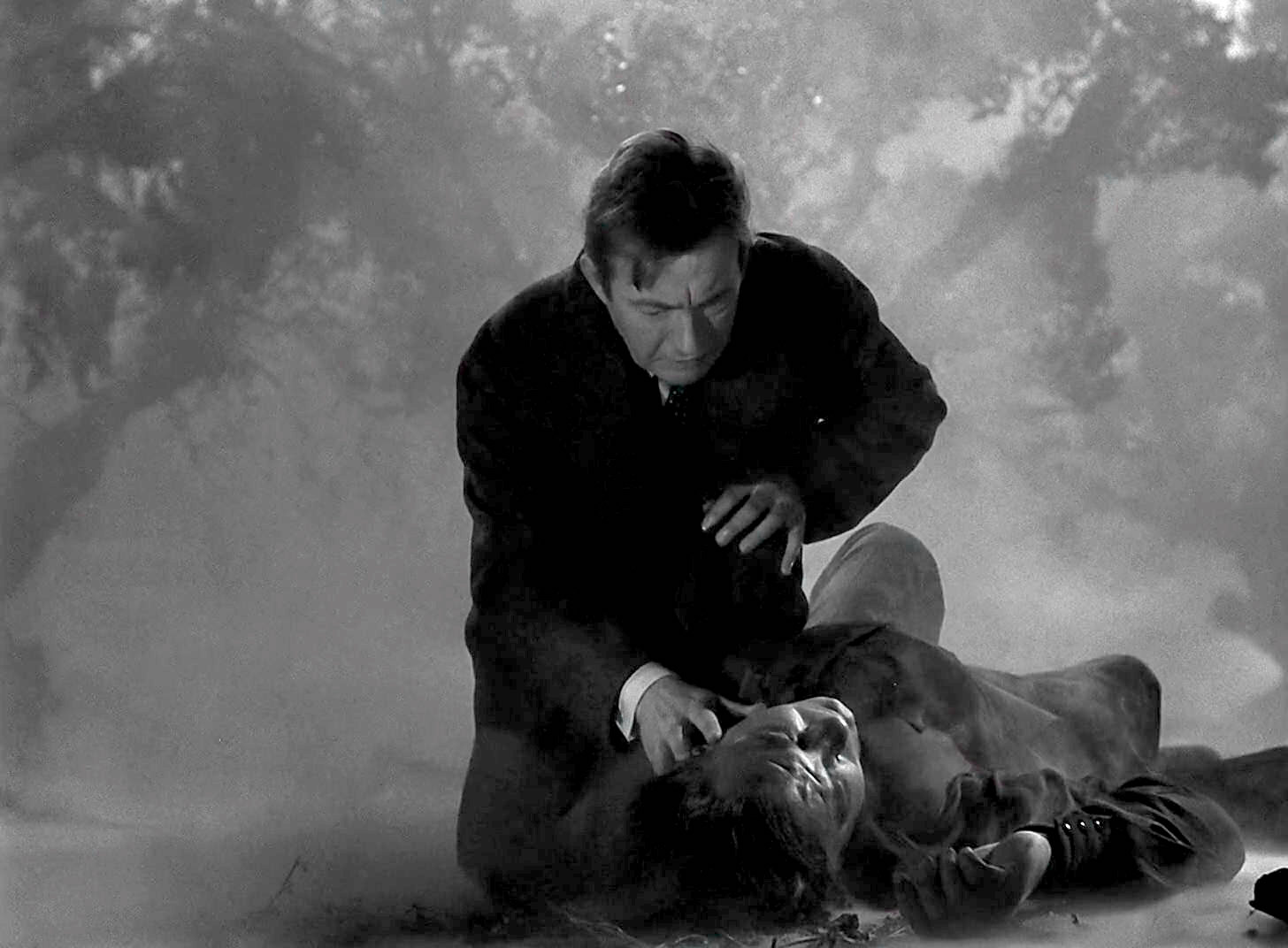Books & Culture
Queer People Still Struggle To Find Support, Meaning, and Connection
Under the haunted surface of "All Of Us Strangers" lies the paradox of shared pain from shame and isolation
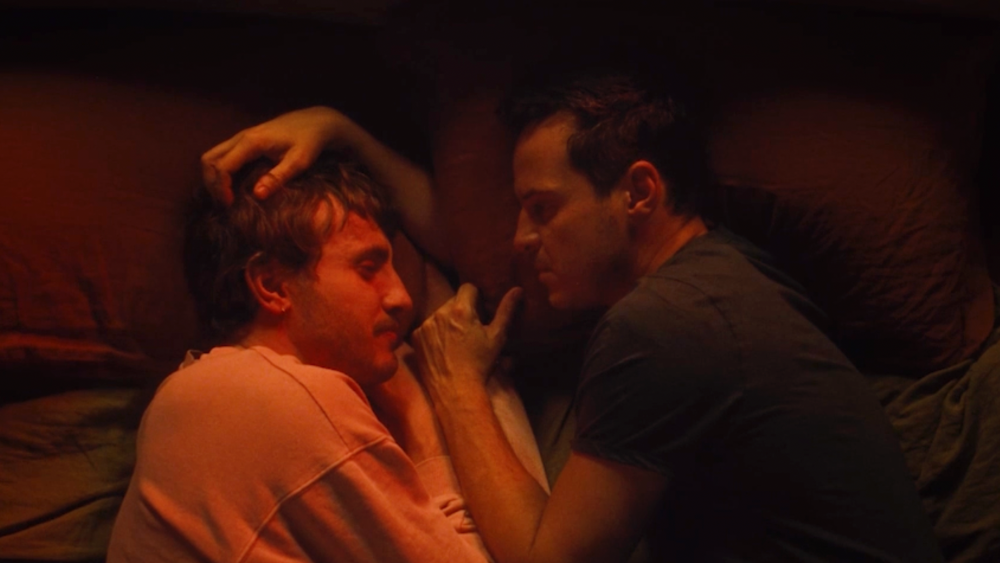
The film opens with a view of London’s skyline; doused in a deep blue evening sky. Lights of the city blink. The onset of night reveals a man standing behind a window, translucent, looking down. He is shirtless; his arms are crossed; his expression is still and pensive. As he comes into focus, a pale orange glow begins to overwhelm the blue, and the image is washed out. The title appears across the screen, All of Us Strangers, and promises a tension that cannot be resolved: A collective estrangement, connection born by isolation.
All of Us Strangers, directed and written by Andrew Haigh, is a time-bending, supernatural exploration of grief and the darker shades of queer life, which ultimately poses substantive questions about how struggles with queer identity have persisted over time.
The film follows Adam, a middle-aged, gay screenwriter played by Andrew Scott. He lives an isolated life, ensconced in a sterile apartment in a high-rise building only inhabited by one other person—Harry, a younger man played by Paul Mescal, who Adam softly rejects when he shows up drunk at his door.
His childhood perceptions and adult experiences intermingle and collide.
Adam is working on a screenplay about his childhood. His parents died in a car crash when he was 12, and when he visits his suburban childhood home for research, they materialize there, the same age they were when they died. He visits and explains his adult life to them—his career, his home, and most painfully and vitally, his queerness. He falls in love with Harry as he reintroduces himself to his spectral parents, opening himself to the vulnerability and care of an intimate relationship for the first time in years.
Time loses its linear thread. His childhood perceptions and adult experiences intermingle and collide, pulling him inexorably toward the injuries of his early adolescence: The loss of his parents and the dawning of his queer sexuality in a hostile world. Adam tells Harry that the lingering pain of these traumas formed a “knot” inside him, an ossified manifestation of his terror of being alone.
The film’s final reveal is that Harry himself is dead: Adam discovers his body in his apartment, but his ghost still appears and speaks. Whether Adam’s parents and Harry are products of Adam’s imagination or spirits with their own consciousness is left open, but the complex interplay between them and Adam suggests ineffable presences: Even if only projections, their own subjective experiences of love and pain emerge. Like Adam, they are there and not there, alone and not alone.
In creating All of Us Strangers, an adaptation of Taichi Yamada’s 1987 novel Strangers, one of Haigh’s aims was to portray the emotional contours and edges of his generation of gay men. As he noted in an interview:
“I’ve wanted to do that for a while, but I could never quite find the right story to do it. And then telling it in the form of this strange ghost story about, essentially, what haunts us felt like the perfect way to explore a certain generation of people and what happened to us in the ’80s and ’90s. Connecting that with a story about grief and about a need to reconnect with parents felt like this perfect osmosis.”
Adam, as a gay man in his 40s, came of age in the 1980s and lived through three decades of turmoil, oppression, and progress in queer communities. AIDS ravaged the lives of innumerable queer men in the 80s and 90s and made them the objects of societal scorn and fear, sometimes manifesting in outright government repression (see the U.K.’s Section 28, which outlawed the “promotion of homosexuality” in schools and in local government in 1988). As the film depicts, these dire conditions could leave a child like Adam feeling that to live a gay life would be to live a desolate one.
Yet legal and social changes were to come in the decades ahead: Spurred on by committed queer activism, over the next twenty years effective treatments for HIV/AIDS were developed; public acceptance of gay people increased; and legal rights for queer people, including the right to marry and to serve in the military, were established in numerous countries (primarily in the Global North).
Shifting political tides have created a more equitable world for queer people, but this does not neatly map onto personal experiences of queerness. Haigh expresses the disjuncture between the appearance of a better world and one’s internal relationship with that world. When Adam comes out to his wary mother, who knows nothing of the world beyond 1987, he explains to her that “things are different now,” and asserts he’s content with his life. She doesn’t buy it. She stares at him with a searching concern, and she says it must be a “lonely life.” Adam rebuts this, but his face cracks. “If I’m lonely, it’s not because I’m gay. Not really.” “Not really,” she echoes, her perceptions confirmed. His “not really” marks the schism between outward contentment and inner pain. Progress has not alleviated the pain of coming of age, alone, in a society that deliberately pushed queer people to its margins.
Some critics have noted that All of Us Strangers presents a quandary that is specific, maybe exclusively so, to queer people of Adam’s generation: in Vanity Fair, Richard Lawson writes that “the film may seem awfully foreign to some younger queer people who, while no doubt still suffering the batterings of an often hostile world, can’t quite identify with Adam’s internal wrestling: his fear, his coded shame, his hermetic longing. Older viewers may run headlong toward the film’s despondency, finding solace, even catharsis, in its haunting ache.” Reflecting how Haigh views his film as an exploration of “what haunts us,” not only in the literal appearance of ghosts from but also in the shadowed, stalking presence of the recent past’s injustices, Lawson observes that those too young to have known these ghosts in corporeal form may not identify with Adam’s pain.
Haigh anticipates this critique in the film itself through Harry. Though one could read Harry as a projection of Adam’s own wants and fears, the subtle layers of his characterization and Paul Mescal’s thoughtful, sensual performance suggest a presence with his own past and his own will.
Harry, in his 20s, cuts a different figure than the tightly coiled Adam: He is direct, flirtatious, and relaxed, but drifts in and out of a diffuse melancholy. He is comfortable approaching Adam and honestly discussing queerness, yet it still hangs a shadow over his life.
Those too young to have known these ghosts in corporeal form may not identify with Adam’s pain.
After Adam and Harry have sex for the first time, they lie naked in Adam’s bed, shrouded in a soft darkness. Adam, who has already revealed some of his childhood and his formative pains to Harry, asks Harry about his own personal history. Harry came out to his parents as a teenager, and though they did not react dramatically, he says it “confirmed” the difference he always felt from his family; to name his sexuality was to define his intractable separation. He tells Adam that he has “drifted” from them, and that he feels on the outskirts of their lives compared to his straight siblings. Adam responds that “things are better, of course they are. But it doesn’t take much.” Again, the acknowledgment of life being “better,” followed by the admittance that something is still missing at the core.
Harry is not much better off than Adam. On the surface, his life is undeniably easier, as someone who entered adulthood with more enshrined rights than someone of Adam’s generation, and without the threat of AIDS hanging over him (when Adam confides to Harry he used to be afraid he’d die from having sex, he adds that it must be hard for Harry to understand). He was provided for in his childhood and adolescence, without fear of violence or abandonment because of his sexuality. And yet, he is untethered and solitary, sunk in the same pool of time-stretching isolation as Adam, and for reasons directly related to his queerness. In Harry’s characterization, Haigh expresses that queer people’s separation from the structures of straight life have persisted unabated across generations, engendering the same feelings of isolation and shame for individuals in their 20s and in their 40s.
The heterosexual family is key to All of Us Strangers: A foundational structure that society organizes itself around, which queer people, as their internal sense of difference rises within them, may realize was not built for them.
Adam’s grief for his parents is compounded by the fact that he could not share who he truly was with them—in coming out to their ghosts, he makes up for lost time and sutures wounds left unaddressed by their loss. Though Harry’s comparatively placid childhood and uneventful coming out would seem to leave him on sturdier ground as an adult, his queerness not only marked him as inherently “different,” but severed him from his family. His siblings, who married and had children, deepened their ties to their parents and created a multi-generational bond, while Harry, as a single, queer man, cannot connect in the same way. Adam, though without parents, is left isolated by the same metric: His straight friends eventually married, had children, and moved to the suburbs.
Queer people, of course, are now able to marry and to have children via adoption or surrogacy in many countries, but the fact of one’s ability to assimilate into the dominant culture does not mean one feels at home in it. Adam and Harry are both characters who grew up in conventional nuclear families: with middle-class, white, suburban, heterosexual parents, who presumably expected their children to form families in a similar image when they grow up. Growing up with a burgeoning sense of one’s own queerness in such a configuration can knock a child off their axis. One thinks they belong, and as they develop a sense of self and mature sexually, they realize they do not.
The fact of one’s ability to assimilate into the dominant culture does not mean one feels at home in it.
Even someone in Harry’s generation, growing up with the reasonable hope of a baseline tolerance and certain civil rights, must reconcile their own queerness with the straight world around them. To assimilate fully into the norms of straight culture—to start a family and move to the suburbs—may feel like denying one’s essential difference for the sake of belonging, even with a same-sex partner. And given the recent rise in attempts by right-wing politicians to curtail the rights of queer and trans people, one’s acceptance as a queer family or couple is precarious at best—the future is never guaranteed.
In his review of the film, Michael Koresky cites queer theorist Lee Edelman’s polemic No Future, an argument against “reproductive futurism”: the concept that the preservation of society relies upon prioritizing future children over the concerns of the present. Edelman argues that society is structured around this concept—that the “social order” relies on us projecting our hopes for the future on a symbolic “Child,” a figure unrelated to the actual lives of children (rather, the amorphous “child” that appears in the rhetoric of politicians inveighing us to “build a better world for our children.”) Queer sexuality by this argument, stands in direct opposition to reproductive futurism, instead embodying “the social order’s death drive.”
All of Us Strangers, notes Koresky, embodies the ideas of queer theorists like Edelman, making literal the concept that queerness, in its alienation from dominant forms of social organization, is unbound by conventional perceptions of linear time. The forward march of time is marked by a set of socially determined milestones, essential among them marriage and children. Children endow us with a concept of futurity, of continuance of our lives past our own deaths. When one’s identity grates against these, time can drift, keeping us stagnant or sending us back into the past, rather than propelling us forward into an illusory future. One can feel, even in a “better” world, that they are dancing on the edge of a void.
Andrew Haigh’s 2011 film Weekend, the story of a profoundly intimate 48-hour affair between two gay men, anticipates some of the narrative and thematic concerns of All of Us Strangers: A connection emerges out of deep loneliness, and the changing role of queerness in society is discussed and examined from multiple angles: After too much cocaine, the couple has a heated argument about the value of gay marriage, with one arguing for the radical potential of two men publicly proclaiming their love, the other decrying the assimilation into “the system” that gay marriage entails.
Haigh’s two films, made over a decade apart, illustrate what has changed and what has not. The struggle for some civil rights, marriage chief among them, is settled law in many countries, instead of a debate. Yet for queer people, there is a continued struggle to find support, meaning, and connection. Progress in the form of legal rights and greater public acceptance, which could only occur after years of dedicated activism, has helped queer people achieve some level of equality and safety, yet ironically, Haigh’s screenplay for All of Us Strangers posits that certain difficulties of queer life have become harder to talk about as a result. If it is collectively agreed upon that “things are better,” it can be hard to pin down what is still painful, what has not been resolved.
What ultimately compelled me most about All of Us Strangers is how Haigh examines this challenging tension in queer life: That a sense of separateness from mainstream society persists, in younger generations of queer people and older generations. That one can be physically present in the world, but feel that they are watching it, half in shadow, from behind a pane of thick glass.
On the other side of this central tension, though, is connection and love. Thrashing through his own isolation for the film’s duration, Adam embraces Harry at its end, illusory as this relationship is. Lying under the haunted surface of this narrative is the concept that the pain of isolation and separation is, paradoxically, inevitably, shared by others. The tension established in the title reverberates: What isolates us and what connects us, across time and generations, can spring from the same source.





